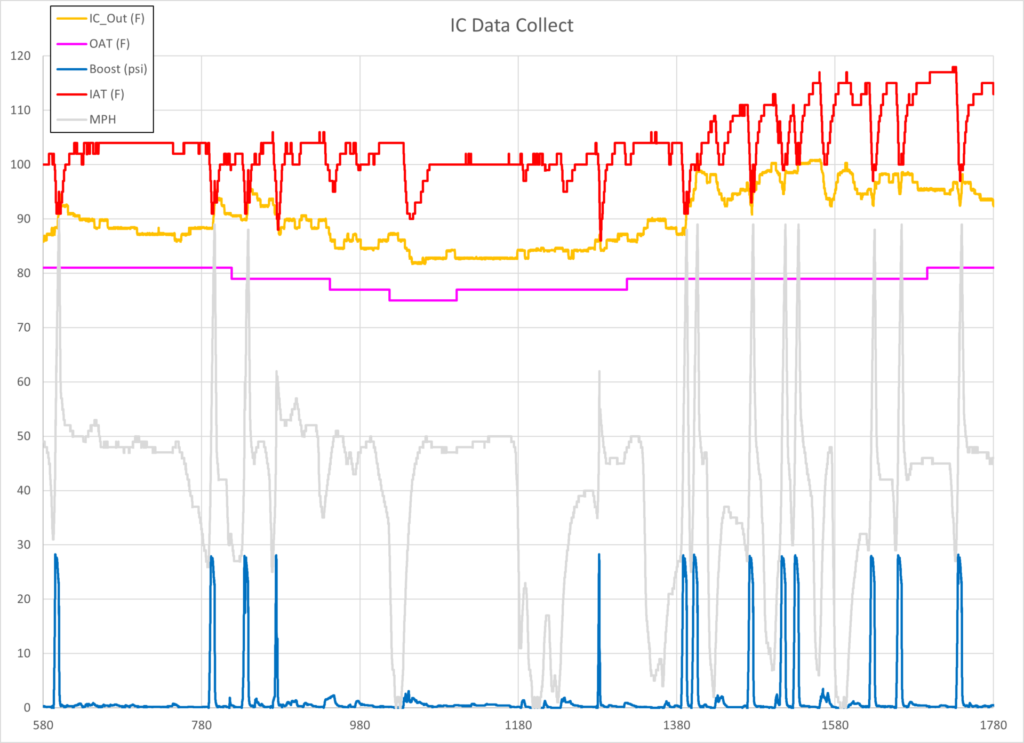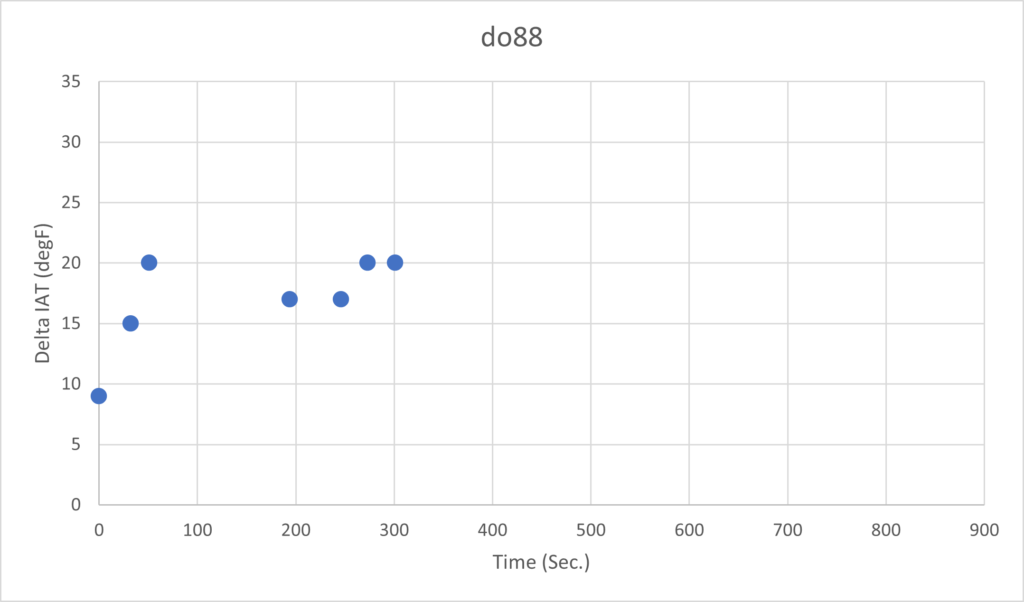The Claim:
I’ve come across fellow enthusiasts making this statement a few times, “Tube and fin intercoolers recover quicker than bar and plate intercoolers.“

Often the claim will be accompanied by a description of the physical attributes of each IC type, with a leap of logic to the conclusion that one type of intercooler performs better than the other. Usually, these statements are not accompanied by measurements from a car (Saying usually is being generous, I cannot ever recall somebody providing evidence in support of their claim) so I took a look at some data I’ve logged using each type of intercooler.
It hasn’t been evident under what conditions the claim about tube and fins recovering more quickly applies, or what recovering more quickly consists of, or if any other aspect of the intercooler design would factor into the recovery time, so what follows is my guess at a situation that might be relevant to the claim.
Data Collection:
Some temperature data that I have logged was collected during a full-throttle pull in third gear which was then repeated a “few” times with a “short” period of recovery time in between.
The measure I use for comparison is the Intake Air Temperature (IAT) above ambient air temperature at 6,000 RPM.
Repeating the pull a “few” times means that there isn’t a specific number of data points that I record.
The “short” period of recovery is also not a specific time passage. This is primarily dictated by the operating environment (public streets) and if it supports a pull at the time I’d like to conduct one.
Below is an example of a data collection session.

Results:
Data recorded using a Racingline Bar and Plate style intercooler is shown below. There are eight (8) data points. The time between the dots is the recovery time:

The trend is for the initial pulls to result in an increase in the intake air temperature above ambient. The temperature measure steadies out below 20 degF and then with a longer recovery time drops down to below 15 degF.
Next is an example of a Tube and Fin style intercooler from do88. There are seven (7) data points.

As with the Bar and Plate style, the temperature increases during the first few pulls and stabilizes around 20 degF. Also like the bar and plate, with a slightly longer recovery period the temperature drops down, in this case to just over 15 degF.
Conclusions:
A comparison of data recorded using a Bar and Plate style intercooler was made with the same measurements taken using a Tube and Fin style intercooler.
Both intercooler types showed a temperature drop when there is a longer interval between pulls, providing the intercoolers with more time to recover after being heated.
There does not appear to be a significant difference in temperature recovery between the Tube & Fin and Bar & Plate intercoolers used in this comparison.
